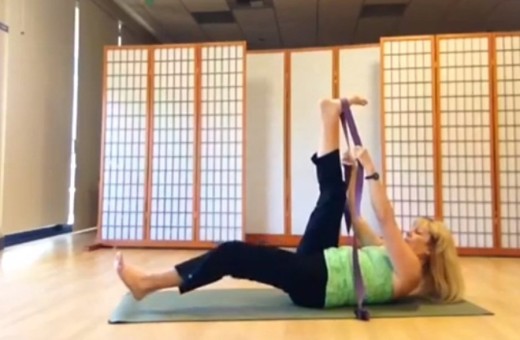
1
Calf Stretch
How to do it: Stand, holding on to a chair or wall. Step back with your right leg, keeping your knee straight and your right heel pressed into the ground. Bend your left knee. Hold for 10-30 seconds, then repeat on the other side.
Why it helps: Tight calves can lead to injuries such as shin splints, ankle pain, and plantar fasciitis.
Quadriceps Stretch
How to do it: Stand, holding onto a chair or wall if necessary for balance. Bend your right knee, grab your foot, and pull your heel in toward your buttocks. Stand straight, keeping your thighs and knees together. Hold or 10-30 seconds. Repeat with the left leg.
Why it helps: It is important to have strong and flexible quads since these are the muscles that help lift your knees and increase your speed.
Hip Flexor Stretch
How to do it: Start from a kneeling position. Step forward with your right leg, so that your knee is bent to about 90 degrees. Placing your hands on your right thigh, press forward over the right leg, pushing your hips forward slightly. You should feel the stretch at the top of your left thigh. Hold for 10-30 seconds, then repeat on the other side.
Why it helps: Many runners have tight hip flexors, caused by the small repetitive motion of running, and aggravated by weak glutes. Glute strengthening exercise are important too, as tight hip flexors lead to poor posture, and potentially hip and low back pain.
Hamstrings Stretch
How to do it: Lie on your back. Put a strap around the ball of your right foot and lift the leg up, keeping your knee straight if possible. Straighten your left leg on the mat. If you are very tight, you can bend your right knee slightly. Gently pull your leg toward you, holding for 10-30 seconds. Complete the IT Band stretch next. Then repeat both on the left leg.
Why it helps: Tight hamstrings can lead to back pain, cause poor posture, shorten your stride, and lead to pulled muscles.
IT Band Stretch
How to do it: From the hamstrings stretch, take the strap in your left hand. Take your right arm out to the side (T-position). Keeping your knee straight, and your right hip pressed firmly into the ground, slowly lower the leg to the left. I’ll repeat, keep your right hip pressed into the ground, otherwise this stretch will not be as effective. Hold for 10-30 seconds, then repeat the sequence on the left side.
Why it helps: The Illiotibial (IT) band starts at the hip and runs down the outside of your leg. If it is tight, it can begin to rub on the outside of your kneecap, potentially leading to pain in your knee.
Hip Stretch
How to do it: Lie on your back with both knees bent. Cross your right ankle over your left knee. Lift both legs, grabbing your left thigh and pull toward your chest. Use your right elbow to push gently on your right knee. Hold for 10-30 seconds and repeat on the other side.
Why it helps: Tight hips, common in runners, can lead to pain and injury. Every time you stride, you pull your hip forward, and every time your foot hits the ground, you abruptly put a stop to that motion. Flexible hips can make your running stride feel easier and more relaxed.
Piriformis Stretch
How to do it: Lie on your back with your left leg straight on the mat and your right leg elevated at a 90 degree angle and the knee bent at 90 degrees. Take your right arm out to the side (T-position). Use your left hand to gently bring your right knee toward the ground. Keep your right shoulder on the mat. Hold for 10-30 seconds, then repeat on the other side.
Why it helps: If the piriformis becomes too tight, it can irritate the sciatic nerve, which can lead to glute, low back, and leg pain. There are, of course, many different ways to stretch these particular muscles. If any of the above stretches cause you pain, you should try an alternative. Never stretch a muscle to the point of pain.
Watch the video below.
For similar stories, click on Stretching.